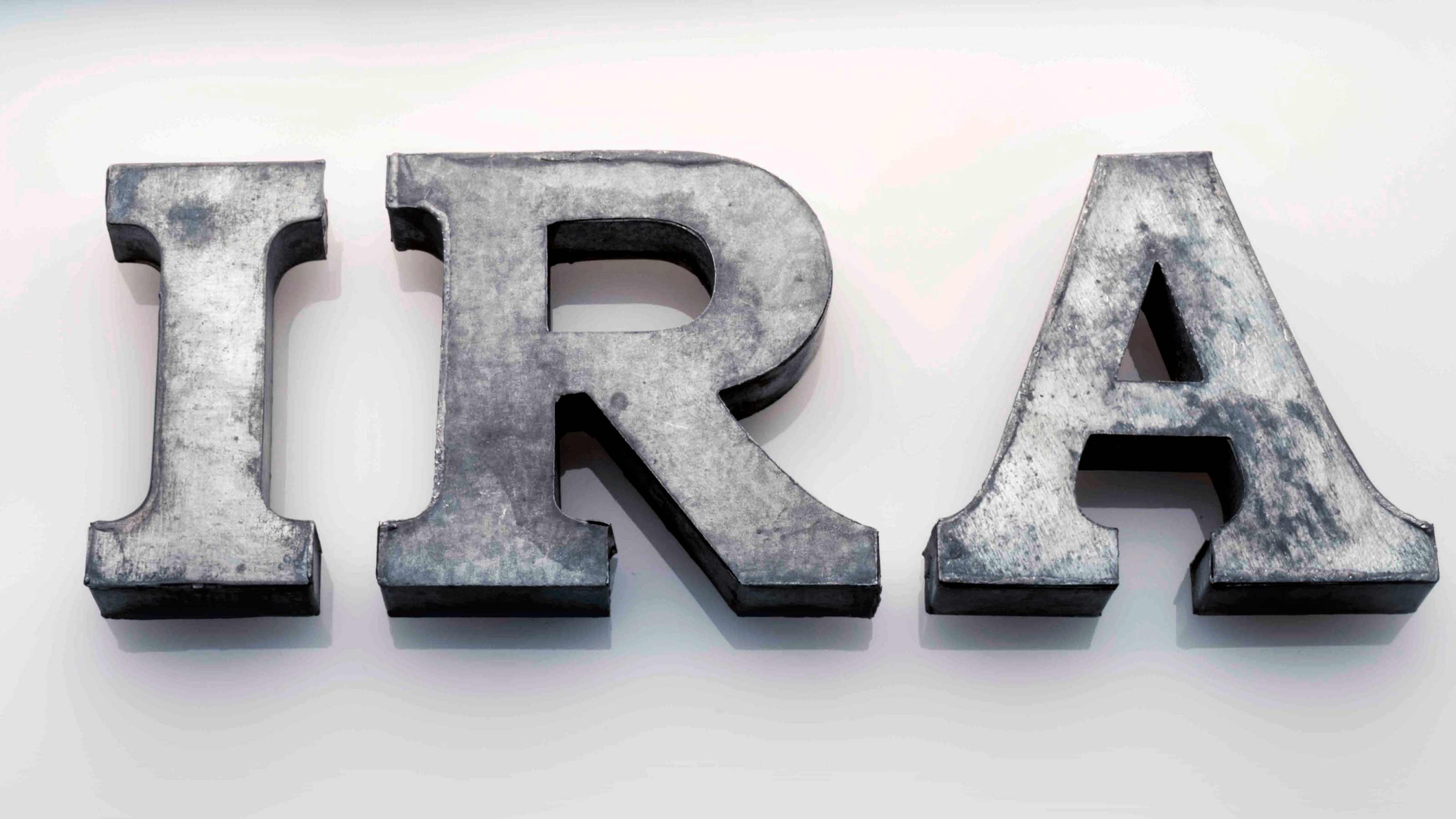I Contributed Too Much to an IRA – What Should I Do?
The rules on excess IRA contributions can be confusing. But if you act early, you can minimize any effect on your taxes.


Dealing with IRA's can be a headache at times. That's why, here at Kiplinger, we have an entire section of our website devoted just to stories involving IRA's. But we still get lots of questions about retirement, and one of the frequent questions we receive from readers who are saving for retirement is: "I contributed too much to my IRA. What do I do?"
However, before jumping into some of the answers to that question, let's take a step back and go over some basic information about IRAs and their contribution limits. Once you understand how much is too much when it comes to IRA contributions, you'll have a better understanding of what can be done if the limits are exceeded.
IRA Basics
An Individual Retirement Account (IRA) is a trust created to save money for retirement or for the owner's beneficiaries after their death. Traditional IRAs and Roth IRAs are the most commonly used types of IRAs. Both can hold investments without slamming the owner with a tax on earnings or realized gains. This can help anyone amass a larger pot of money for retirement.
From just $107.88 $24.99 for Kiplinger Personal Finance
Become a smarter, better informed investor. Subscribe from just $107.88 $24.99, plus get up to 4 Special Issues

Sign up for Kiplinger’s Free Newsletters
Profit and prosper with the best of expert advice on investing, taxes, retirement, personal finance and more - straight to your e-mail.
Profit and prosper with the best of expert advice - straight to your e-mail.
Traditional IRAs encourage retirement savings by allowing you to make tax-deductible contributions up to specified limits ($6,000 for 2021, or $7,000 if you're age 50 or older). Contributions to a traditional IRA, as well as earnings on those contributions, are taxed only upon withdrawal.
Roth IRAs offer other tax enticements. While contributions (also limited to $6,000 in 2021, or $7,000 if you're age 50 or older) are not deductible from current income, withdrawals from Roth IRAs are not taxed. As a result, contributions to Roth IRAs grow tax-free. The downside is that there are income limits that restrict participation in Roth IRAs. As a result, the actual amount that you may contribute to a Roth IRA is based on your filing status and modified adjusted gross income.
In 2021, the maximum Roth IRA contribution limit is available for married couples filing a joint return with a modified AGI under $198,000 and single filers with a modified AGI under $125,000. If the modified AGI for joint filers is between $198,000 and $207,999, or between $125,000 and $139,999 for single filers, then the contribution limit is reduced. Joint filers with a modified AGI of $208,000 or more, and single filers with a modified AGI of $140,000 or more, can't contribute to a Roth IRA at all.
You also must have earned income to contribute to an IRA. Earned income is not just money from wages and salaries, but also includes tips, bonuses, and commissions. On the other hand, keep in mind that not everything counts as earned income. Alimony, child support, rental income, investment income, and unemployment benefits are not included in your earned income.
But what happens if your income is less than the maximum contribution amount for an IRA? In this case, you can only contribute up to the actual dollar amount of your earned income for the year. Essentially, you can't contribute more to your IRA than you earn.
Excess IRA Contributions
Now let's get to the main part of this story. What happens if you contribute too much to an IRA? And what can you do about it?
First, let's define what it means to make an "excess contribution." Generally, an excess IRA contribution occurs if you contribute more than the contribution limit, contribute more than your earned income, or make an improper rollover contribution to an IRA (e.g., rollover funds after the 60-day time limit).
Second, be warned that there's a penalty for contributing too much to an IRA. Excess contributions are taxed at 6% each year in which they remain in the IRA. The excise tax is reported on Form 5329. You may be taxed on the excess amount if you withdraw it, too.
Here are four relatively easy things you can do to minimize the effects of excess contributions on your bottom line. These may not be the only options available to you, but additional steps could require the assistance of expert legal advice.
Withdrawal before the due date of your tax return. In most cases, the best way to deal with an excess contribution is to withdraw the excess amount as soon as possible. You can avoid the 6% penalty by doing this if the withdrawal is done by the due date of the IRA owner's tax return for the taxable year of the contribution (including any extension). So, if you put more than the allowed amount into an IRA in 2021, you must take the excess funds out by April 18, 2022 (April 19 for residents of Maine and Massachusetts) if you don't request a filing extension, or by October 17, 2022, if you do.
Any income earned on the withdrawn contribution must also be taken out and will be taxed in the year in which the contribution was made. In addition, no deductions are allowed for a withdrawn contribution. Plus, if the IRA owner is not yet age 59½, then any earnings included in the withdrawal are subject to the 10% excise tax on premature distributions.
If you're wondering how to calculate the amount of earnings that an excess contribution can accumulate, the IRS offers a formula to apply in these situations (AOB stands for Adjusted Opening Balance and ACB stands for Adjusted Closing Balance).
Excess Contribution x (ACB – AOB)/AOB) = Earnings
Here's an example: Mr. Alpha contributed $5,000 to an IRA last year. The total amount in the IRA after this contribution was $15,000. Months later, as Alpha fills out his tax return, he realizes that he could only contribute $3,000 to the IRA because he only had $3,000 of earned income last year. He immediately withdraws the extra $2,000 before his tax return is due. When he first contributed the excess amount, his IRA balance was just $15,000, but now it's $22,000. This means that his Adjusted Closing Balance is $22,000, while his Adjusted Opening Balance is $15,000 (initial amount of IRA plus contributions).
If we put this into the formula, we get $933 of accumulated earnings from the excess contribution ($2,000 x ($22,000 - $15,000)/$15,000 = $933). As a result, in addition withdrawing the $2,000 excess contribution, Alpha will also take an extra $933 from his IRA to account for the earnings.
Withdrawal after the due date of your tax return. Excess contributions may be withdrawn after the due date of the IRA owner's tax return for the taxable year of the contribution (including an extension) without being treated as a taxable distribution in two situations. (Note that the 6% excess contributions penalty still applies.)
First, if the excess amount is due to "erroneous information" being given to you that led to a failed rollover. If this were to happen, your contribution limit would be raised for that tax year by the excess amount resulting from the inaccurate information. You should also file an amend tax return for the year the excess occurred to adjust the rollover amount reported on the original return.
Second, if your contributions for the tax year in which the excess amounts were made didn't exceed the yearly dollar limit on IRA contributions and there was no deduction of the withdrawn excess contribution on your tax return. Again, if the IRA owner is not yet age 59½, then any earnings included in the withdrawal are subject to the 10% excise tax on premature distributions. If, in an earlier year, you deducted an excess contribution for a year in which you didn't exceed the limit on IRA contributions, you can still remove the excess from a traditional IRA without including it in your gross income by filing an amended return without the deduction.
Here's an example of where the late withdrawal of an excess contribution can avoid being taxed: Mrs. Beta was told by her employer's retirement plan administrator that she could withdraw $100,000 from her 401(k) plan and then rollover the full amount to her own IRA. Soon after, she used a direct rollover to move that amount into her IRA. A few years later, she was told that, due to an administrative error, she wasn't entitled to withdraw $15,000 of the $100,000 amount. As a result, that portion of the rollover was rejected, and a $15,000 excess contribution was created. However, since the failed rollover resulted from the erroneous information Beta received from the retirement plan administrator, she won't be taxed on the $15,000 excess contribution for the tax year when the rollover occurred. However, she must pay the 6% excise tax on the excess amount in her IRA each year until the excess is withdrawn.
Recharacterize the excess contributions. Recharacterization is another approach to dealing with certain excess contributions. Recharacterization allows you to move an excess contribution from a traditional IRA to a Roth IRA, or the other way around. By recharacterizing the contribution, you are moving it from one type of IRA to another in a nontaxable transaction. Doing this properly may also allow you to avoid the 6% penalty.
A recharacterization must be completed by the IRA owner's tax return deadline (including any extension) for the year in which the initial contribution was made. The IRS could grant you additional time (though don't count on it), but you must show that you missed the deadline even though you acted in good faith and that an extension would not hurt the interests of the government. Remember that it's rare for the IRS to grant this.
For example, let's say that Mr. Gamma makes a $3,000 contribution to his Roth IRA in 2021. Although he doesn't realize it at the time, his income is too high to make contributions to a Roth IRA. Therefore, he has a $3,000 excess contribution. If Mr. Gamma timely moves the $3,000, plus any related earnings, from his Roth IRA to a traditional IRA, he will have recharacterized the contribution. Now, since there are no income restrictions on contributions to traditional IRAs and the amount in question is below the 2021 IRA contribution limit, the recharacterized contribution is no longer an excess contribution.
"Absorption" of excess contribution in later years. If the deadline for an excess contribution has passed and nothing was done to correct it, you owe the 6% penalty for the year of the excess contribution. However, you should still take the excess contribution out of your IRA so that you don't get hit with additional penalties. In fact, you'll continue to get hit with the 6% penalty yearly until the excess contribution is either "absorbed" or distributed. But assuming you don't take it out, the excess amount is then pushed forward into the next tax year as if it were a regular contribution in that year.
An excess contribution can be absorbed as a regular contribution for a later year if the person who made the excess contribution is eligible to make a contribution for such later year and doesn't use up their contribution limit for that year. The main concern with this action is that the maximum that can be absorbed in any year is the contribution limit amount for that year. If the contribution limit is reached and the excess distribution is not eliminated, the 6% excise tax will be applied to the remaining excess contributions in future years.
For example, an elderly Mrs. Omega makes a $25,000 contribution to her traditional IRA in 2018. The contribution limit that year for someone age 50 or older was $6,500, which means that she created a $18,500 excess contribution. Assume she does nothing to fix it, makes no additional contributions, and doesn't receive any distributions from the IRA in the last three years. The IRA contribution limit for Mrs. Omega in 2019, 2020, and 2021 is $7,000 per year. That means $7,000 of the $18,500 excess contribution can be absorbed in 2019 and 2020, while the last $4,500 of the excess can be absorbed in 2021. However, she will have pay the 6% excise tax each year on whatever excess contribution is left in the IRA until it is fully absorbed.
Profit and prosper with the best of Kiplinger's advice on investing, taxes, retirement, personal finance and much more. Delivered daily. Enter your email in the box and click Sign Me Up.
William formerly worked as a Tax Editor at Kiplinger beginning in 2021. Before that, William worked in the tax world for over 15 years. He spent time working at the IRS, the U.S. Tax Court, and several private law firms where he dealt with both individual and corporate clients. He has a B.A. in Journalism from the University of Georgia, a J.D. from the Loyola University College of Law, and an LL.M. in Taxation from the Northwestern School of Law.
-
 Holiday Tax Scams: 'Tis the Season to be Wary
Holiday Tax Scams: 'Tis the Season to be WaryTax Scams Navigating tax tricks of the holiday season may be daunting, but don't let that destroy your festive spirit
-
 Metro by T-Mobile Is Giving Away This Samsung Galaxy A16: Which Plans Are Eligible?
Metro by T-Mobile Is Giving Away This Samsung Galaxy A16: Which Plans Are Eligible?Metro by T-Mobile is offering free Samsung Galaxy A16 phones on eligible plans right now. Here’s how the deal works.
-
 I Drive and Collect Classic Cars: Here’s How I Got Started
I Drive and Collect Classic Cars: Here’s How I Got StartedAre classic cars a hobby or an investment strategy — or both? Either way, the vintage car scene is much cooler and more affordable than you think.
-
 Retirees in These 7 States Could Pay Less Property Taxes Next Year
Retirees in These 7 States Could Pay Less Property Taxes Next YearState Taxes Retirement property tax bills could be up to 65% cheaper for some older adults in 2026. Do you qualify?
-
 Estate Tax Quiz: Can You Pass the Test on the 40% Federal Rate?
Estate Tax Quiz: Can You Pass the Test on the 40% Federal Rate?Quiz How well do you know the new 2026 IRS rules for wealth transfer and the specific tax brackets that affect your heirs? Let's find out!
-
 5 Types of Gifts the IRS Won’t Tax: Even If They’re Big
5 Types of Gifts the IRS Won’t Tax: Even If They’re BigGift Tax Several categories of gifts don’t count toward annual gift tax limits. Here's what you need to know.
-
 The 'Scrooge' Strategy: How to Turn Your Old Junk Into a Tax Deduction
The 'Scrooge' Strategy: How to Turn Your Old Junk Into a Tax DeductionTax Deductions We break down the IRS rules for non-cash charitable contributions. Plus, here's a handy checklist before you donate to charity this year.
-
 Are You Middle-Class? Here's the Most Tax-Friendly State for Your Family
Are You Middle-Class? Here's the Most Tax-Friendly State for Your FamilyTax Tips We found the state with no income tax, low property tax bills and exemptions on groceries and medicine.
-
 Social Security Benefits Quiz : Do You Know the IRS Tax Rules?
Social Security Benefits Quiz : Do You Know the IRS Tax Rules?Quiz Social Security benefits often come with confusing IRS tax rules that can trip up financially savvy retirees and near-retirees.
-
 How Are I Bonds Taxed? 8 Common Situations to Know
How Are I Bonds Taxed? 8 Common Situations to KnowBonds Series I U.S. savings bonds are a popular investment, but the federal income tax consequences are anything but straightforward.
-
 Capital Gains Tax Quiz: How Well Do You Really Know IRS Investment Tax Rules?
Capital Gains Tax Quiz: How Well Do You Really Know IRS Investment Tax Rules?Quiz Take our capital gains tax quiz to test your investment taxes knowledge. Learn about loss rules, holding periods, and tax incentives that could impact your savings.
